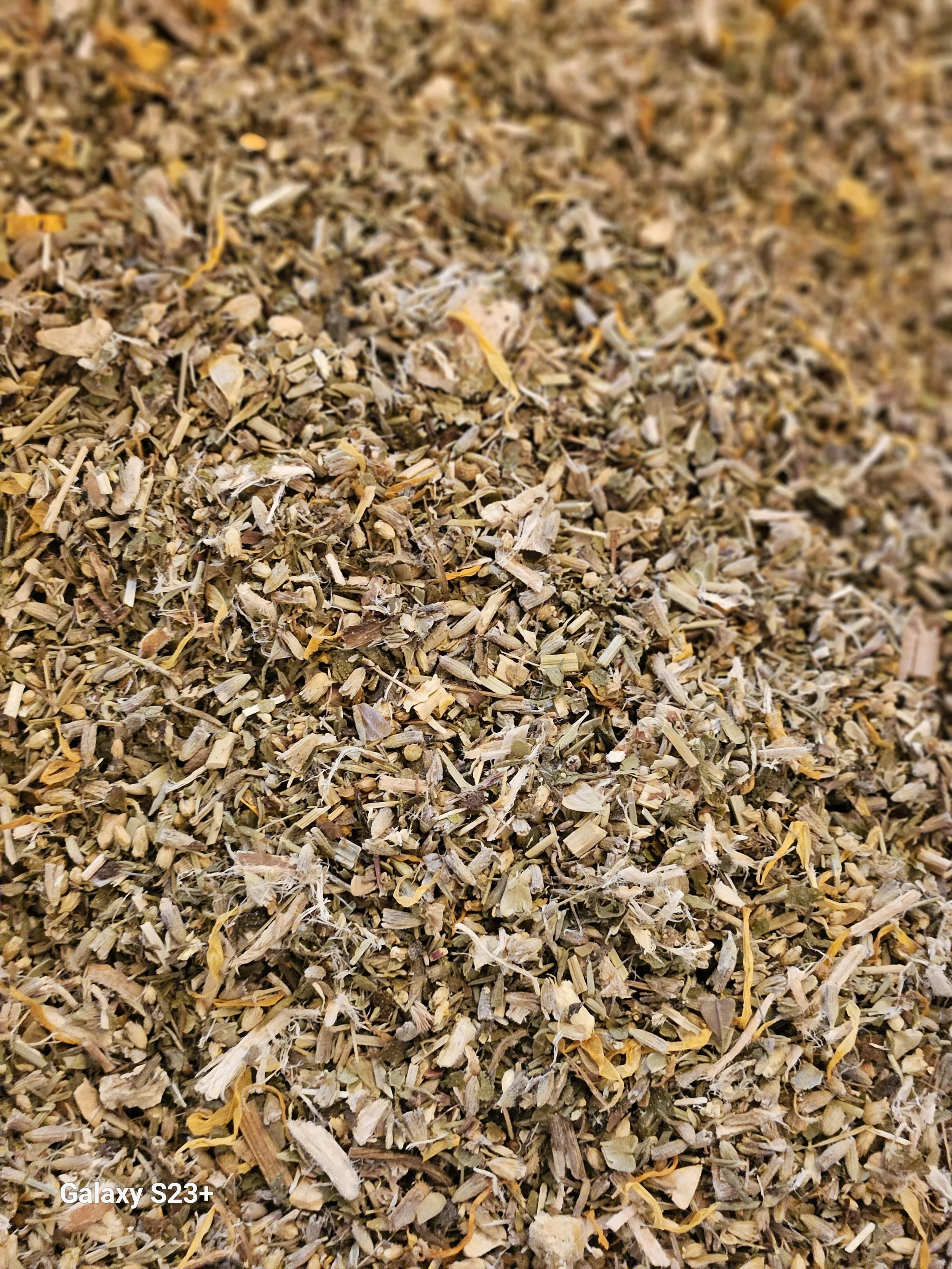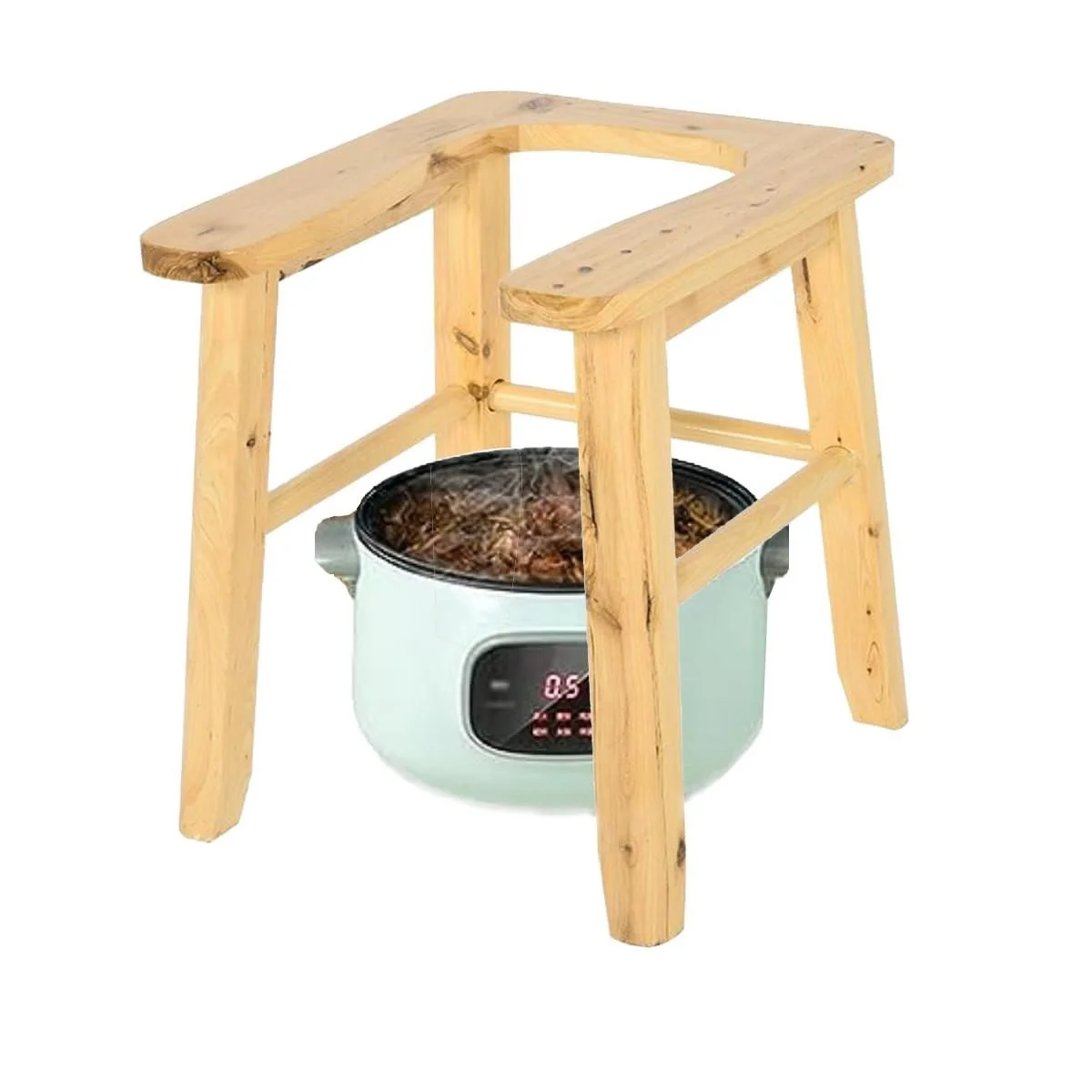Your Custom Text Here
Uterine - Vaginal - Yoni Steam Tea
Free Shipping in the United States
Directions:
Use 1 1/3 cups of dried herbs to 1 gallon of purified water. You can half this amount if your container is small. Simmer herbs in water for 10 minutes. Remove from the heat and steep for 10 more minutes. Check for safe temperature and immediately use for steam or put in your preferred steaming container.
The herbs in our Uterine-Vaginal-Yoni Steam Tea have traditionally been used in some of the following ways to support pelvic floor tissues. Many other herbs can be used or substituted as desired:
Basil - antibacterial and spiritual cleansing
Lavender - calming, antiseptic, & cools inflammation
Oregano - uterine stimulant and antiseptic
Mugwort - balance hormones, antibacterial, antifungal, protective, suppressed menstruation
Rose Buds - gentle and astringent
Lemon Balm -reduces itchiness
Motherwort -suppressed menstruation
Wormwood - antibacterial and antiviral
Not to be used in pregnancy, acute infection, with IUD, or immediately after menstruation. WARNING: DO NOT USE ESSENTIAL OILS IN A STEAM!
Uterine steams, also called Vaginal or Yoni steams are an all but forgotten, old, and respected treatment for those with vaginas and uteruses and used by midwives and traditional healers across the globe to care for and support the uterus. The practice is mentioned in early writings of Spanish friars who took time to record the healing practices of the Maya and Aztec. Bajos (ba-hoes) as they are called in Spanish, are a common and effective treatment for many complaints and rites of passage. Traditional midwives gave these steams within 1-9 days after childbirth depending on the personal preference and the woman’s condition. It is easy to try this self care at home. Steep herbs in a basin of hot water, and find a quiet place to relax with the steam below your bottom. Sounds confusing? Schedule a free Connection Session with me (Tamy) and I will walk you through detailed instructions on how to do a successful steam at your house, or how to throw a yoni steam party with friends.
From https://soulvibrance.com/blogs/vibrant-souls/yoni-steam
The following is by Dr. Rosita Arvig
Rosita, how did you originally learn about the ancient vaginal steam remedy?
It would be hard to put a specific name to it, but since I have been working with traditional healers in Central America since 1970, I always heard about women doing vaginal steams. But I suppose that my use of it was perfected when I met my mentor, Don Elijio Panti, an old Maya herb doctor in Belize, and Hortence Robinson an herbal midwife in Belize. I was with Don Elijilo as his apprentice for 13 years and was with Hortence as an apprentice with for 10 years, simultaneously. The vaginal steam is as common in Belize and Central America as drinking Peppermint tea.
It’s also the result of my digging and digging through old books on women’s health. Vaginal steams were still known back around the turn of the century, even in America. Its one of the things that we lost at that time.
How and why does a vaginal steam work?
From my perspective, as a doctor of naprapathy, I think it works on different levels. One level is introducing warmth and heat in the form of steam into the cervix and into the vagina, the uterus and the fallopian tubes. The steam is expansive and it also has an affect of softening the tissue. From our perspective – from the Maya Abdominal Therapy perspective – women often have painful periods because they have indurated or encrusted fluids from previous menstrual cycles that have not been flushed. The combination of planet oils and steam moves into the uterine walls. The uterine wall is kind of like hills, valleys and mountains if you look at it under a microscope. In between the parts of the membrane that rise, are something called the “venous lakes”. In those venous lakes is where we find the accumulation of incompletely flushed menstrual fluids from previous cycles. It tends to accumulate and then harden there. So you can imagine, if you want to clean something really well, you heat it and steam it. Its steam cleaning! And then the plant oils have their own effect of breaking up, separating and moving things along. So that’s my take on it. I think it’s a combination of those, and the fact that it’s so soothing. Most everyone who tries it loves it. It’s so comforting, physically and emotionally, all at the same time. After the vaginal steam, when the cycle comes again, as I mentioned in my previous blog*, women may see what looks like chocolate syrup or coffee grounds. And that’s good! That’s what was built up in the venous lakes and causing issues.
Vaginal steams are said to support women with many issues including uncomfortable menses, infertility, ovarian cycts, fibroids, polyps, etc. Have you seen these types of things remedied by vaginal steaming?
Of course! It’s a woman’s treatment. It doesn’t really matter what the pathology is. The treatment is across the board, and universally effective for any aspect of uterine pathology.
There may be many reasons for infertility, but one of those reasons is induration of the uterine wall. When we combine vaginal steaming with abdominal therapy – the deep external massage on the uterus – we have a very dynamic approach with great results (if that happens to be that issue that is causing the infertility, which it may not be). After the treatments, after we really get the uterus cleaned out, what we would hope for is a pregnancy within 1-3 cycles. But even if that isn’t the issue, who wants to put a baby in a dirty crib? So we encourage all women to clean the uterine membrane before they get pregnant.
And of course, there is also postpartum. That is also absolutely great. It depends on the midwife, the culture and the country. Some say to do it immediately, some say 3 days after birth, others say 6 days, others say 9. I know the midwife makes a decision based on the individual case. Obviously, in cases of extreme bleeding or hemorrhaging, a vaginal steam would be contraindicated. But usually, very soon afterwards they use the vaginal steam to prevent the distended abdomen.
It is also very good in pre-ovulation, to make sure that the tissue is moist and that the cervical fluids are clear and copious. We use it preovulatory to improve ovulation and also to improve fertility.
Finally, women who are in menopause should still do their vaginal steams, especially in the year after ceasing menstruation. Women should steam three times a year, and will still pass some dryish fluid each time. We wouldn’t want that material to stay in the uterine wall for decades of time, because that of course, leads to bigger problems.
What are the precautions associated with vaginal steaming?
Women who have an Intrauterine Device (IUD), an internal infection (cervical, uterine or ovarian inflammation), or a fever should not do a vaginal steam. Nor should heavy bleeders, or women who think they might be pregnant.
Is there anything else you think women should know when it comes to reviving the practice of this ancient household remedy?
Everyone who wants to try a vaginal steam should be aware of the effects of bringing on more fluid. The menstrual cycle does change afterward. It looks strange and different because its part of the healing process. Cleansing can sometimes be untidy. Ultimately, though, there will be less menstrual fluid passed.
We have seen absolutely astounding and universal results from vaginal steaming. The results are clear. It’s right there! It really does a lot to relieve menstrual pain, and it doesn’t really matter what the problem is with the uterus, the vaginal steam is the classical Central American treatment. If anybody complains about any problem with the uterus, everybody says, “have you done your vaginal steam?” just like we would say, “are you drinking enough water?”

